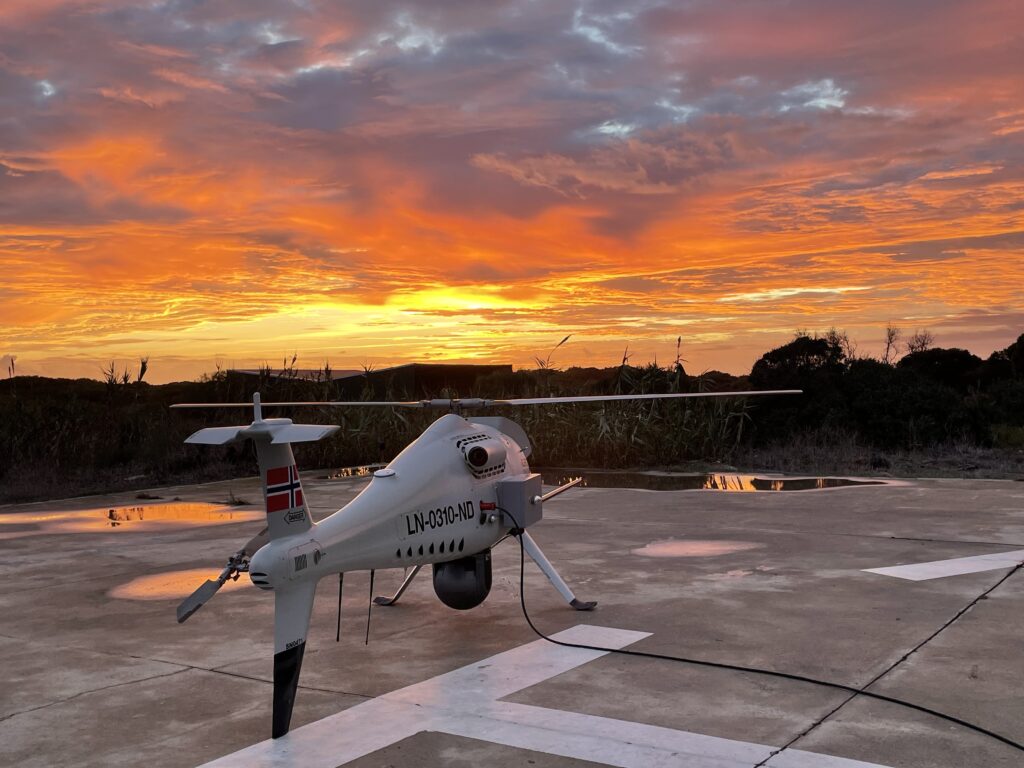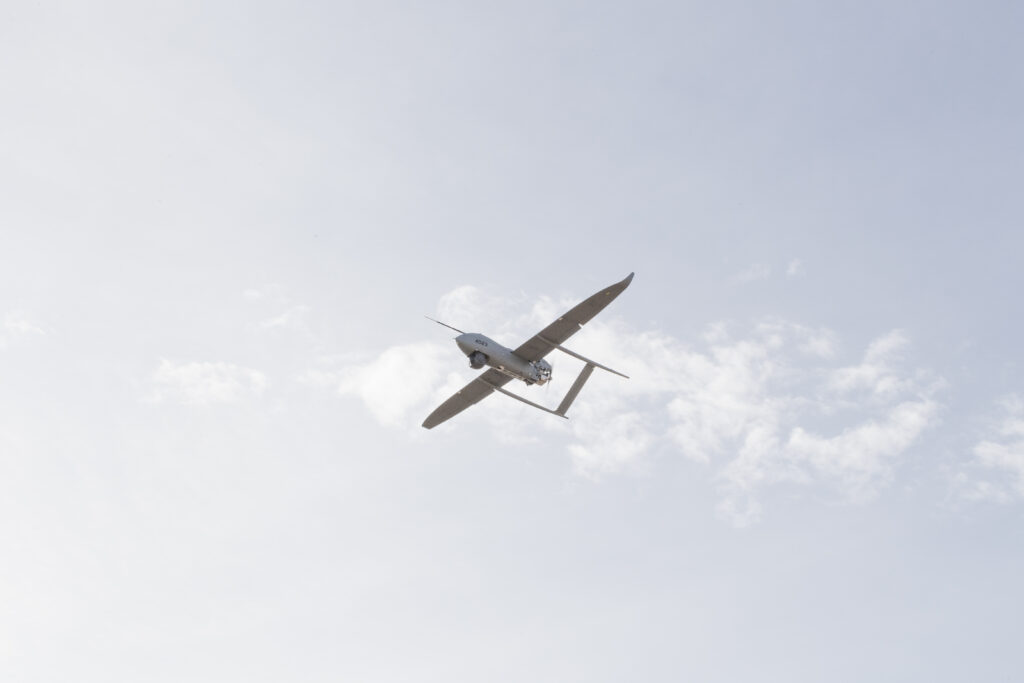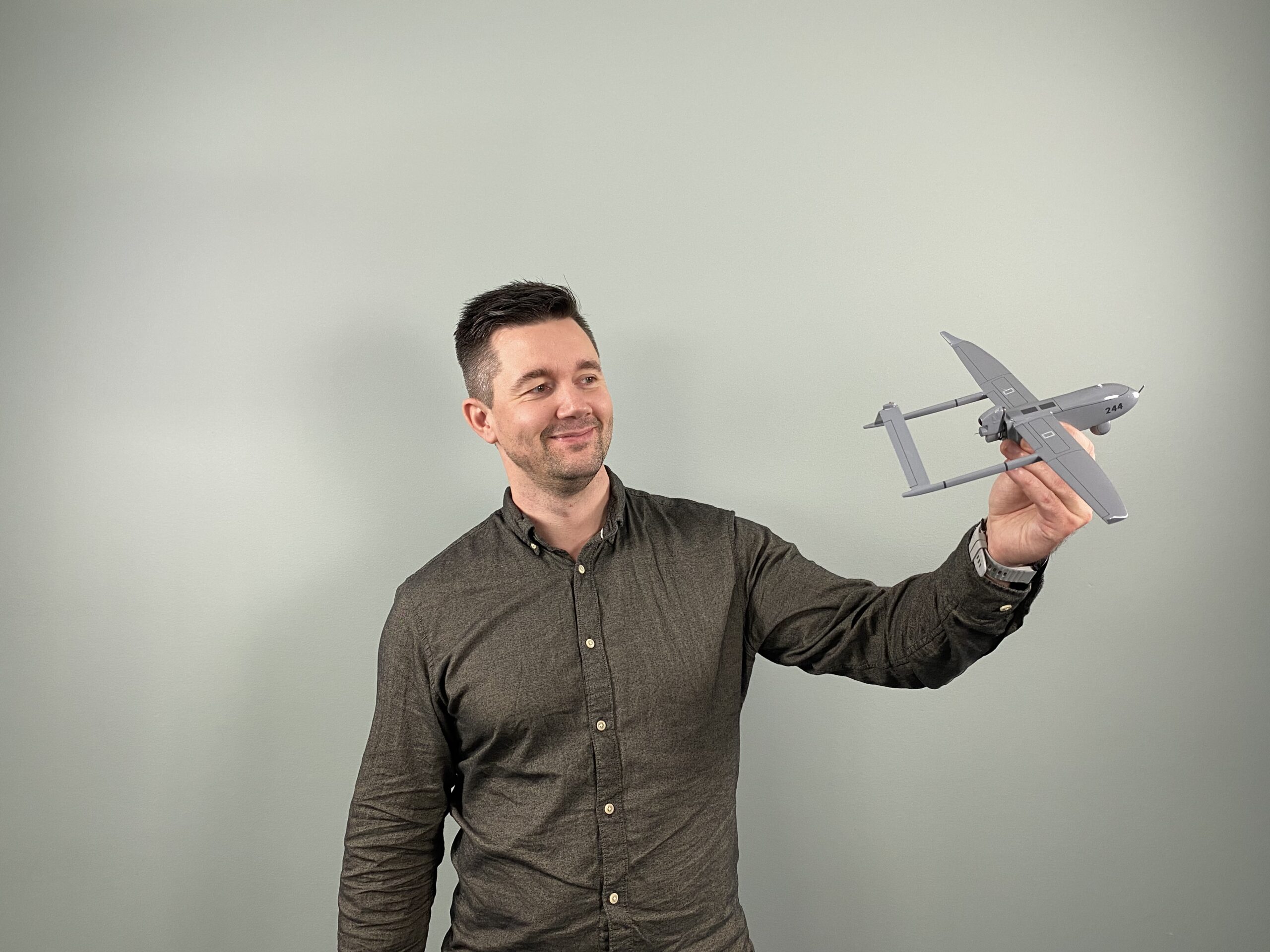Alexander Hatlestad, the Senior Vice President of Operations, gives us an insight into what 5000+ flight hours have given Nordic Unmanned in terms of experience, and what is needed to unlock more of the commercial market.
As Senior Vice President of Operations in Nordic Unmanned, I have the overall responsibility for all flight operations, ranging from lightweight systems that fly line-of-sight, to heavy systems with a range of several hundred kilometers! The systems in our catalog are all different: Our drones perform a range of operations like surveillance, delivery of goods, search and rescue, emission monitoring, and more.

In many ways our day-to-day operations are groundbreaking. Earlier this year, we operated between two states’ airspaces at the same time. This is very it’s exciting because very few companies have what our team does. We can’t look to anyone else for inspiration – this is new territory!
In the summer we created a brand-new business unit at Nordic Unmanned: Nordun. Get ready for a long description: This is the world’s first fully integrated BVLOS (Beyond Visual Line of Sight) drone as a service pure-play business unit, incorporating all functions required to operate complex drone missions with advanced platforms and sensors.
“We created Nordun because we became more alike an airline company. We want to let our operational staff do what they do best, which is conducting operations. Nordun is a full-fledged business unit focused on keeping operations running smoothly and efficiently from the planning phase, all the way through to the end reports, with service quality as its top priority.”
Alexander Hatlestad, Senior Vice President of Operations

Many of our operational crew are certified technicians and pilots that come from the manned industry. They receive training on our drone systems to prepare them for their move into an entirely new field — unmanned aviation! These people also transfer the safety culture, which is well-established in manned aviation. This is crucial because it helps us maintain what has been a success factor for many years: A culture based on safety and professionalism.
Our ability to be on top of the latest rules and regulations has given us an advantage. Nordic Unmanned was number two in Europe to get the Light UAS operator Certificate (LUC) and the first operator to get approval for more than one system. This certificate is the most important tool we have. To be able to self-authorize operations for multiple systems has created a breakthrough for us within the current regulations, and it has given us the ability to scale our BVLOS operations. We are now able to bring this experience into new markets, such as the USA, where BVLOS operations are not as common.
We have a tremendous track record with long-range drone operations. With +5000 flight hours, it is reassuring for clients to know that we are an experienced operator, especially in maritime environments and in sparsely populated areas. When systems and operators become mature enough to be certified to operate over populated areas, we will see immense growth in the commercial market, because you can offer brand-new services and be available to a whole new group of customers. We look at this market development with incredible excitement.

The big future trends of drone operations:
Integration between manned and unmanned aviation
Drone operations will be in the same airspace as manned aviation and gradually go from only being able to only fly over sparsely populated areas, to being able to fly over populated areas as well.
Centralisation of operations
Pilots will have a centralised location where they can control multiple drones. This means that the number of staff needed on-site goes down, which also reduces travel costs. This allows pilots to operate more flights at one time resulting in lower prices per flight hour for the customer.
Shared drone operations
In the future, we will see more share drone operations between countries. Multiple countries collaborating on the same operations gives more data at a lower cost. Additionally, the ability to fly in different airspaces has become important to our customers because it shows we are not limited to regional borders during an operation.
Future challenges for the drone industry:
The success of the drone industry is dependent on the synergies between these four stakeholders:
- The manufacturers that build the drones (OEMs).
- The regulators who organize the frameworks.
- The operators who are operating the equipment according to the regulations.
- The customers, which decide which services and products are worth the investment.
Certifications and regulations are still in development, and before a standard regulation is in place, it’s difficult for OEMs to make something that is according to a certification standard. This means operators must constantly evolve and develop procedures to match the available equipment with the client’s wishes and regulators’ rules. The OEMs and the operators must therefore be aligned to succeed. Therefore, an open dialogue between these four parties is crucial.
To ensure that drones remain a relevant and sustainable alternative in the years to come, the whole industry must use the forums available to drive development as fast as possible, enabling us to unlock a bigger part of the market. Some forums already address these topics, such as the Safety Summit, between Nordic Unmanned and Avinor, the UNC, organized by UAS Norway, and other international forums.
Conclusion:
To unlock more of the commercial market, we need to:
- Have systems and operators certified to fly over populated areas
- Create synergies between OEMs, operators. regulators and customers to achieve these certifications.
- Centralise drone operations, which will lead to lower costs
- Integration between manned and unmanned aviation in the same airspace
- Educate customers on the possibilities and limitations of drones.
- Use the available forums to drive development as fast as possible forward and keep drones a relevant and sustainable alternative for the future.


